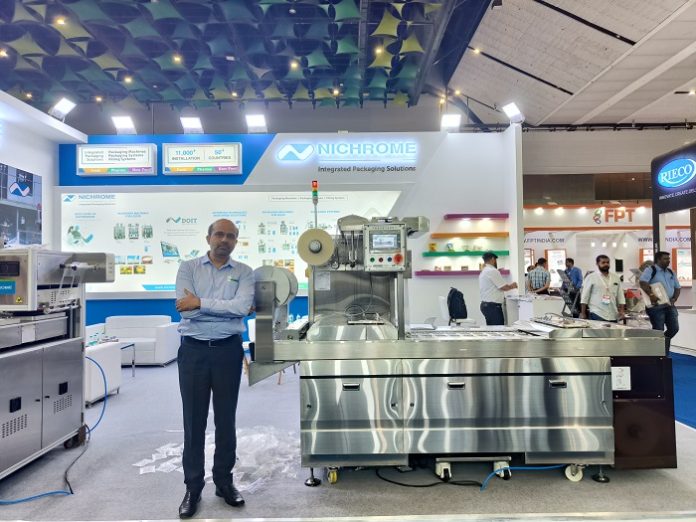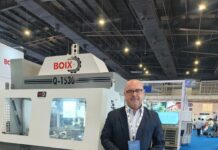
Nichrome showcased a GP 260 thermoforming machine for packing bakery items and a rotary tray MAP sealing machine for bakery products and Indian ethnic sweets at the InterFoodTech exhibition held, from 5 – 7 June at IICC, Yashobhoomi, Dwarka in New Delhi.
Nichrome started its rotary tray MAP (modified atmosphere packaging) sealing machine business three years ago and has had 30 plus installations over three years, Parag Patwardhan, vice president – sales & marketing at Nichrome, told Packaging South Asia.
“For the thermoforming technology, we have a partner from South Korea. It is a new partnership and we expect the sale of 4-5 machines in FY 2024-25. The thermoforming machine for pharma is basically about the subject and application. As per customer expectation and the ecosystem we want to build around the machine, we can decide on the shelf life of the products,” Patwardhan said. Nichrome has been in the thermoforming business for the last two years and represents two companies from Europe.
Its packaging technologies are for food and food doesn’t limit itself to any specific region, he said. The machines are ideal for food manufacturers, MNCs and sweet shops, Patwardhan said, adding they help package food in hygienic conditions. “The MAP machine provides a minimum shelf life of food products for three weeks while the maximum shelf life can go up to six months,” he added.
Traditionally, Indian sweets are always purchased over the counter where people visit a halwai, taste the sweets and make their purchases, Patwardhan said. The situation, however, changed after the Covid-19 pandemic with end-users opting for more hygienic packaging for sweets and savories. Thus, there is a good response and demand for hygienic innovative food packaging, which is advantageous for the eCommerce industry as well, he said.
The Indian packaging industry has matured, he said, adding consumers understand their packaging needs and requirements and, hence, it becomes easy for technology providers such as Nichrome as they don’t need to educate the customers. “Consumers know the value addition suitable packaging will add to their food and pharma products. Ten years down the line, we see many innovative technologies coming to India as well as local technologies under the ‘Make in India’ initiative,” he said.
“We thought that this was a completely different show for the applications segment. The forum is open for discussions on what we can do in India or how to source the applications from overseas. The footfall was really good. We received many inquiries about our products. We feel it is not about the quantity but about the quality,” he shared.
These kinds of events should happen more often when the organizers are trying to reach the industry and make sure that the time and money being invested is justified, Patwardhan concluded.











